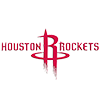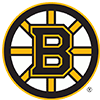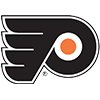With the exception of superstars, we often gravitate to younger pitchers and players for our fantasy teams. Today I begin the first of two articles on aging players who can perform well and provide excellent fantasy production for our teams. I'll begin with five pitchers over the age of 35. Each is appealing and each still has gas left in his tank.
Charlie Morton has been pitching in the big leagues since 2008.
Now, at the age of 38, Morton is pitching for his fifth big league team. He started with the Atlanta Braves, the team that drafted Morton in the third round in 2002 out of Joel Barlow High School in Redding, Connecticut.
After Atlanta, Morton pitched for Pittsburgh (seven seasons), Philadelphia (one season), Houston (two seasons) Tampa Bay (two seasons) and now, back to Atlanta, where he also pitched in 2021. Overall, Morton has a winning record at 110-98.
In 2008, Morton threw his fourseam and sinking fastballs at 92 MPH. He also threw a changeup, a cutter, a slider and a curveball. His repertoire was complete. He threw a combination of fastball/changeup as the most dominant pitches in his first year as a starter. He is currently throwing both his fastballs at 94 miles per hour, an increase in velocity from his first year. His repertoire is now fastball, slider, curve and changeup.
Last year, Morton had a tremendous record of 14-6, with a 3.34 ERA and 1.04 WHIP. So far this year, Morton has not enjoyed
With the exception of superstars, we often gravitate to younger pitchers and players for our fantasy teams. Today I begin the first of two articles on aging players who can perform well and provide excellent fantasy production for our teams. I'll begin with five pitchers over the age of 35. Each is appealing and each still has gas left in his tank.
Charlie Morton has been pitching in the big leagues since 2008.
Now, at the age of 38, Morton is pitching for his fifth big league team. He started with the Atlanta Braves, the team that drafted Morton in the third round in 2002 out of Joel Barlow High School in Redding, Connecticut.
After Atlanta, Morton pitched for Pittsburgh (seven seasons), Philadelphia (one season), Houston (two seasons) Tampa Bay (two seasons) and now, back to Atlanta, where he also pitched in 2021. Overall, Morton has a winning record at 110-98.
In 2008, Morton threw his fourseam and sinking fastballs at 92 MPH. He also threw a changeup, a cutter, a slider and a curveball. His repertoire was complete. He threw a combination of fastball/changeup as the most dominant pitches in his first year as a starter. He is currently throwing both his fastballs at 94 miles per hour, an increase in velocity from his first year. His repertoire is now fastball, slider, curve and changeup.
Last year, Morton had a tremendous record of 14-6, with a 3.34 ERA and 1.04 WHIP. So far this year, Morton has not enjoyed as much success. He is striking out 110-98. Morton is striking out eight hitters a game, which is down by two from last year. He is walking almost five hitters per nine innings, which is an increase, and is a bit troubling. His ERA has spiked to 4.95 this year, up from last season. I still think Morton can be trusted.
Carlos Carrasco, RHP, New York Mets, age 35
Dealing with nagging injuries more now than ever in his career, Carrasco's return to the Mets rotation has been a very positive sign for the team. A native of Venezuela, Carrasco was signed by the Philadelphia Phillies as an international free-agent in 2003. The Phillies traded him to Cleveland in 2009 in the deal that sent Clifton Lee to Philadelphia.
The Cleveland Indians traded Carrasco to the Mets, along with Francisco Lindor for Andres Gimenez and Amed Rosario. Now in year 13 of a great career, Carrasco is having a superb season so far. He is 3-1 with a 3.73 ERA and 1.22 WHIP in seven starts.
In 2009, Carrasco's fastball sat at 93MPH. Today? The same 93. In between the years, he would ramp the fastball to 95, but that was the top speed. He also uses a slider, a changeup and a curve, giving himself a full repertoire with which to dispatch hitters. The curve is the pitch he uses with less frequency.
At 6-4, 224 pounds, Carrasco has dealt with lots of health issues, the most serious being a bout with chronic myeloid leukemia, a form of blood cancer he suffered at the age of 31 in 2019. He battled his way back to health and back to the mound. Carrasco is striking out eight hitters a game, while walking one to two. I'll take that. Nagging injuries have slowed him , but he has all his energy and is pitching very well.
Lance Lynn, RHP Chicago White Sox, age 35
I will be the first to admit that I have concerns about the physicality of Lynn. He is huge and he looks totally out of shape. It is his core that concerns me the most. He is carrying 270 pounds on his 6-5 frame, but he looks heavier than that.
Lynn is currently on the IL due to issues with his knees. That is a direct result of the stress being placed by his weight when he lands. His injuries aside, I include Lynn on this list because he pitches for a team that I believe will be in the playoffs. That means he'll get the ball until the end of the season. If, of course, he's active and on the roster. In 2011, Lynn threw his fastball at 93. He had been known to ramp up to 95 at times. Now, when healthy, Lynn is back at 93, a tick below the 94 he threw last season.
Lynn relies on both a four-seam fastball and sinker to pair with a cutter as his main weapons. He also mixes in a slider and changeup. But the fastball/cutter combination works for him.
When he's healthy and sharp, Lynn can be counted upon for about 10 strikeouts a game. He'll usually walk three hitters per nine.
The White Sox extended Lynn's contract through 2023, hoping they can get two more years from him. While I'm not sure that will happen, I still think he's a valid fantasy baseball option, albeit one who has some shaky injury worries.
Lynn can pitch well for a couple months, and then he begins to falter. This year, that couple months may be when his team needs him most — in the second half of the season. And I'll take that.
Corey Kluber, RHP, Tampa Bay Rays, age 36
Kluber turned 36 in April. He pitches now for Tampa Bay, a team that knows how to handle a pitching staff.He may not go deeply into games, hurting your innings count, but he'll give his team and our fantasy teams a chance to win.
Kluber has had to ditch the frequency with which he uses his fastball in favor of more spin and breaking balls as he gets older. He is throwing his cutter more, which results in more fly balls than I think he would like.
His fastball is down to 89 to 90 miles per hour in a good outing, and when he does throw the fastball, it is usually the two-seam sinker. But unlike most big league pitchers, he is using a fastball on only 30 percent of his pitches. The cutter is used more. And he also counts on a slider to change the eye level and rock the balance of the hitter. His changeup is rarely used, because the differential from the fastball is really inconsequential.
This season, Kluber's walk rate is down by two to one per game. His strikeouts remain the same as they have for years, at nine per nine innings.
But beware the fly balls. Kluber is yielding more home runs at this young stage of the season than we might expect or desire. But he pitches for Tampa Bay. I like that. He's smart and savvy. I like that, too.
Adam Wainwright, RHP, St. Louis Cardinals, age 40
For me, Wainwright is a master on the mound. He's so deceptive and so smart in the way he pitches that I trust him to be on my fantasy teams any time I can grab him. And Wainwright pitches on a team that scraps for wins. They know how to win, and Wainwright is their leader. He just knows what it takes to win.
Wainwright is huge at 6-7, 230 pounds. He pitches downhill and relies on location and movement to dispatch hitters, which is exactly what a pitcher should be concerned with.
Wainwright has the benefit of throwing to Yadier Molina, a wonderful handler of pitchers.
Using mostly his sinking fastball, which is at 87 MPH, Wainwright is now throwing three miles per hour less on that sinker than he did early in his career. He also throws an incredible curve, a cutter and a changeup in his repertoire, balancing all his pitches evenly and keeping the hitter guessing.
Wainwright's goal is to get the hitter to pound the ball into the ground. Keeping the hitter off balance and wondering what pitch is coming is the focal point of Wainwright's strategy on the mound. Hard contact is his enemy, as it is for most pitchers. Wainwright makes his pitches work for him.
As steady as steady can be, Wainwright has struck out seven hitters per game for years. This year, his walk rate is up a tad from two to three.
I think he's the Master of the Masters. And he just keeps on going.
The over 35 pitchers I am avoiding now:
Hyun Jin Ryu, age 35: I like his team, I don't like his injury history, which makes him unreliable to me. I go back and forth, and I may stream him depending on his opponent.
Yu Darvish, age 35: I can't take the inconsistency, and I have watched him blow up my fantasy teams with his bad outings. He works for some, but I can't take it any longer. He's having a great season. I can't deny that. But I've seen with my own eyes how quickly he falls apart. I have to pass, but you may clearly want him on your side.
I DO want to roster Max Scherzer, Justin Verlander, Zack Greinke and pitchers like them. We know what they can do. I know that Scherzer will be out for a while, but he'll be back to help his team as the playoffs near.
People often ask me about Madison Bumgarner. I watch him a great deal because he pitches for Phoenix. I'm not a fan. I think his inconsistency is an issue for me, as is the lack of offensive support he gets from the Diamondbacks. But he is pitching very well so far this year. He is a pitcher I may consider later in the season if he's available at the right price. His age? Actually, he's only 32, and he doesn't qualify for this article. He just pitches older. And he's thrown a gazillion pitches on that left arm. Pass for me.
HEADING HOME:
In an era with a deader baseball and fewer home runs, the Houston Astros lit up Nathan Eovaldi of the Red Sox for five homers in one inning. If the hitter makes solid contact with the right swing, the ball still travels out of the park. Even in this new "dead" ball era.
The Diamondbacks Zac Gallen may be the most-under-the radar-pitcher in the game. But he comes with that D-backs lineup that doesn't score many runs. And don't be mislead by their recent scoring. I don't think they sustain that.
Before the season, and during spring training, I warned that I had grave concerns about the Guardians rotation. I was concerned about Aaron Civale, Shane Bieber and Zach Plesac, in that order. I am still concerned, but even more so. Civale blew up last week, and then he had a good start last Friday. I'm still concerned.
I know the Commissioner wants the automated umpire system to come to fruition. I just don't see it happening. Two huge issues need resolution: breaking balls crossing the plate (where did they cross)? And the height of the hitter and his strike zone. I just don't think there is a good enough automated system to depart from human umpires.
What I can't tolerate is a different strike zone for different umpires. The strike zone on the MLB books reads as follows: "The official strike zone is the area over home plate from the midpoint between a batter's shoulders and the top of the uniform pants when the batter is in his stance and prepared to swing at a pitched ball, and a point just below the kneecap. In order to get the strike call, part of the ball must cross over part of home plate while in the aforementioned area." Yes, they use run-on sentences.
Question to you my dear readers: Is that the strike zone you see being called?
As I've said many times in the space, I do believe we will see the pitch clock in MLB next season. I just don't know how much time the pitcher will be given to throw the ball. I also think the hitter will have to stay in the box. Wouldn't that be amazing?
And, I do believe MLB will require infielders to keep both feet on the dirt, and by so doing, modify the shift. That may just be the compromise position.
Four outfielders? I don't think they'll touch that. But I do think we'll see more and more teams deploy four outfielders against sluggers, giving them a hole in the infield, which of course, they will never take advantage of.
Jose Abreu's bat is really, really slow. His eye-hand coordination isn't the same. And just when does a baseball player turn from excellent to looking old? Abreu may heat up when the weather turns much warmer, but I'm seeing very steep decline. He was even slower this week, than last.
The Diamondbacks Alek Thomas can hit. He's strong and powerful. And frankly, still a secret.
Thanks for following me on twitter @BerniePleskoff and for reading my work at Forbes. Have a great week.







































